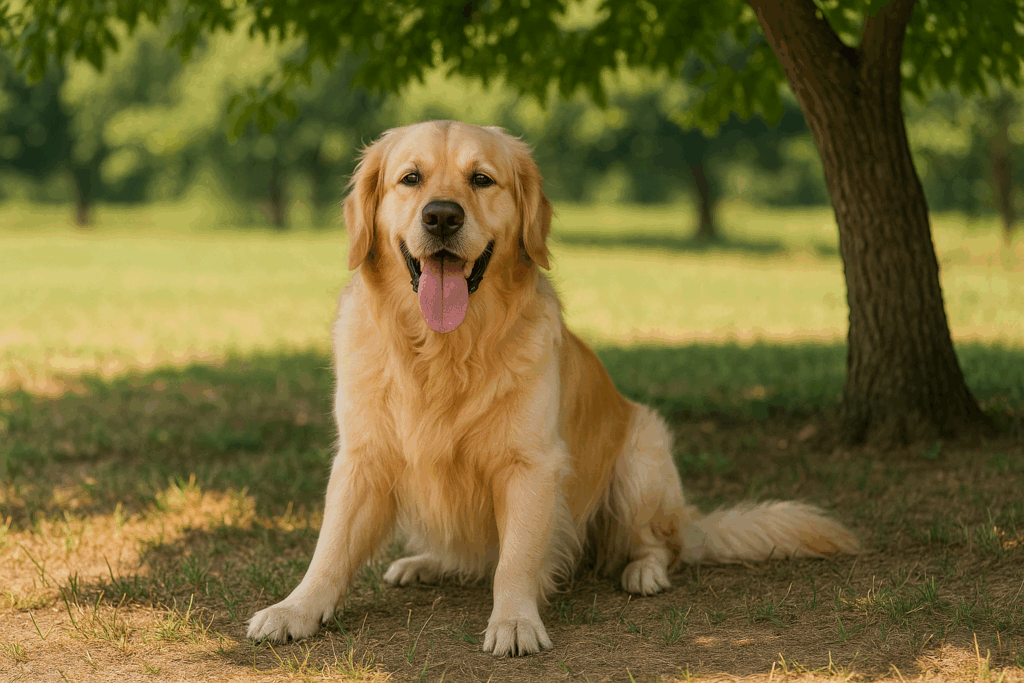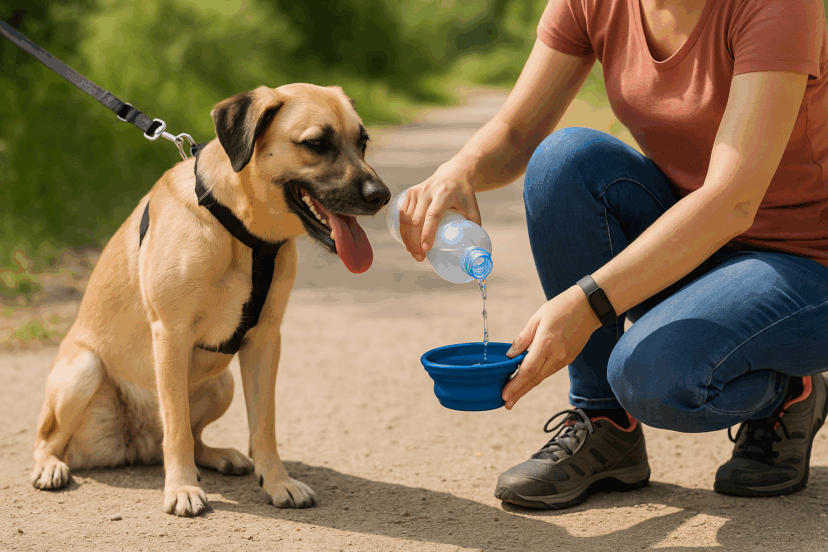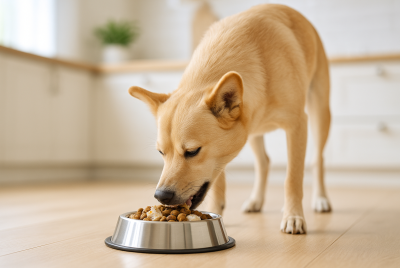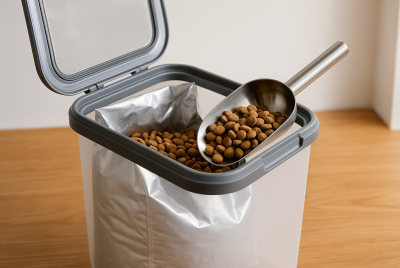8 Signs Your Dog Is Overheating + How To Help Fast
We may earn a commission for purchases made using our links. Please see our disclosure for more details.
When your dog is overheating, every second matters. Dogs use panting to control their body temperature because they don’t sweat like people do. But during intense heat or physical activity, panting alone may not be enough. In minutes, your pup can go from warm and playful to dangerously overheated.
Whether you’re on a summer walk, lounging at the beach, or just sitting outside, recognizing the warning signs is vital. This guide will help you act fast, prevent serious complications, and keep your dog safe and cool.
8 Warning Signs Your Dog Is Overheating
1. Excessive Panting
All dogs pant—but if the panting is rapid, shallow, and doesn’t stop with rest or shade, it’s a clear signal of overheating.
2. Rapid Heartbeat
Feel your dog’s chest. A racing or pounding heartbeat means their body is working too hard to cool down.
3. Lethargy or Weakness
An energetic dog suddenly becoming sluggish, slow to respond, or lying down more than usual could be in distress.
4. Bright Red or Pale Gums
Healthy gums should be pink. If your dog’s gums turn deep red, pale, or blue-tinged, it’s a sign of poor circulation and heat stress.
5. Vomiting or Diarrhea
Overheating can upset a dog’s digestive system. Watch for signs like vomiting, diarrhea, or dry heaving.
6. Drooling or Thick Saliva
Sticky or excessive drool signals dehydration and potential overheating, especially when paired with heavy panting.
7. Disorientation or Staggering
If your dog looks confused, stumbles, or can’t walk straight, their internal temperature may be dangerously high.
8. Collapse or Seizures
These are emergency signs of heatstroke. Immediate action is necessary—move your dog to a cool area and call your vet ASAP.

Remedies for Overheated Dogs
Quick action can save your dog’s life. Follow these steps immediately:
- Move your dog to a shaded or air-conditioned area.
- Serve cool water—not ice-cold. Give them tiny amounts to drink.
- Cover their groin, armpits, neck, and chest with cool, damp cloths.
- To improve air circulation, use a fan.
- Avoid ice baths or freezing cold water, which can cause shock.
- Call your vet immediately, even if your dog starts improving.
Even after symptoms ease, internal damage may still be present—so don’t skip that vet visit.
Preventing Overheating in Dogs
Heatstroke is preventable. Here’s how to keep your pup safe:
- Get some exercise early in the morning or late at night.
- Ensure water and shade are always available.
- Never, even for a short while, leave your dog in a parked automobile.
- Brush out excess fur to improve air circulation around the skin.
- Be aware of breed sensitivity—flat-faced (brachycephalic) breeds are especially vulnerable.
- And if you’re new to pet ownership or considering a companion that’s more heat-resilient, check out this helpful guide to a pet that’s easy to take care of for low-maintenance, happy companions.
Best Products to Keep Your Dog Cool
Stay ahead of the heat with these tried-and-true solutions:
- Arf Pets Dog Cooling Mat – self-cooling, portable, and reusable.
- K&H Pet Products Coolin’ Pet Cot – raised design keeps airflow underneath.
- PetSafe Drinkwell Fountain – keeps water cool and constantly circulating.
- Highwave AutoDogMug Portable Dog Water Bottle – One-handed hydration solution while on walks or hikes.
- RUFFWEAR Swamp Cooler Dog Harness – Combines the benefits of a cooling vest with the control of a harness—great for active breeds.
These tools don’t just offer comfort—they can be the first line of defense against heatstroke.

Science Backs It Up: Research on Canine Overheating
While dog lovers rely on experience and observation to protect their pets, science offers valuable, data-driven insights into heatstroke in dogs—why it happens and how to respond effectively.
A comprehensive review of canine heatstroke published in Veterinární Medicína breaks down the two primary types: classic (from environmental heat) and exertional (from activity). It outlines how factors like obesity, flat-faced breeds, and extreme temperatures increase risk. The review stresses that without immediate intervention, overheating can lead to organ failure, coma, or death.
Meanwhile, a detailed study on the pathophysiology of heatstroke in dogs explains how the condition triggers a chain reaction—systemic inflammation, gastrointestinal damage, blood clotting disorders, and shock. These findings reinforce why fast action at the first sign of distress is not just helpful—it’s critical.
Together, these studies underline that overheating isn’t just a seasonal inconvenience; it’s a serious, scientifically proven medical emergency. Knowing the symptoms, acting fast, and preparing in advance are the best defenses you can give your furry companion.
Final Thoughts
Keeping your dog safe from the heat isn’t just about comfort—it’s about survival. The more you understand the risks and signs, the better prepared you’ll be to prevent heatstroke before it starts.
A little planning, a few helpful tools, and a close eye on your dog’s behavior can go a long way toward ensuring every summer day ends with a happy tail wag—not a trip to the emergency vet.
FAQs
1. What temperature is too hot for dogs?
Generally, anything over 85°F (29°C) can be dangerous—especially in humid conditions or for at-risk breeds.
2. Can I use ice to cool my dog down?
Avoid ice baths. Use cool, damp towels or room-temperature water instead to prevent shock.
3. What breeds are most vulnerable to overheating?
Brachycephalic breeds (Bulldogs, Pugs, Boxers) and overweight dogs are more prone to heat-related issues.
4. Does my dog’s fur need to be shaved in the summer?
It depends on the breed. Some dogs’ coats protect them from heat. Always consult your vet first.
5. How can I distinguish between tiredness and heatstroke?
Tired dogs rest. Overheated dogs show signs like excessive panting, confusion, vomiting, or red gums—act immediately if you’re unsure.




